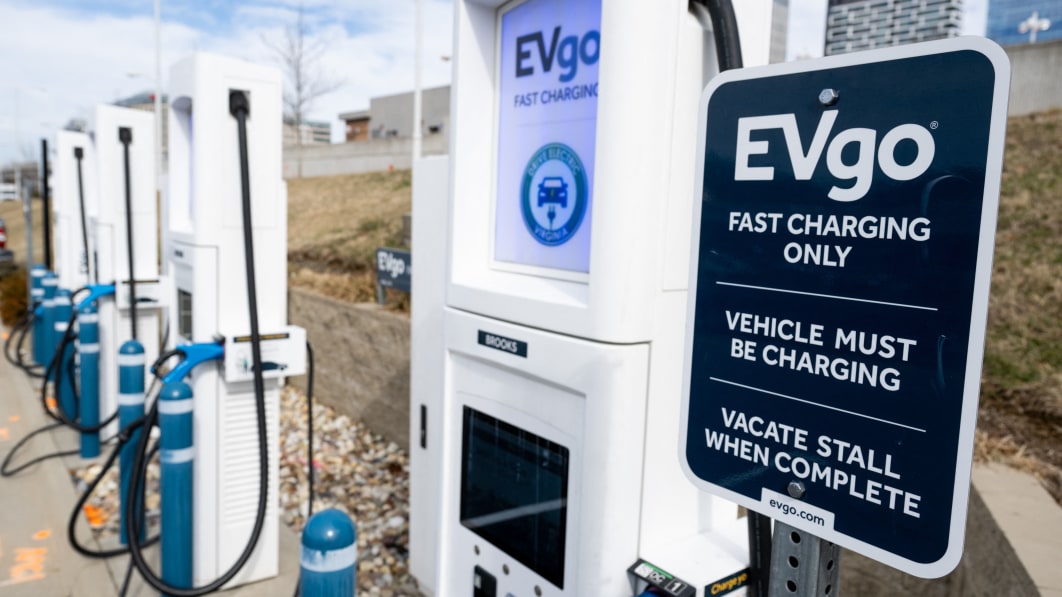
Electric vehicles are becoming more common by the day, and the old concerns of range anxiety seem to be fading as many new EVs offer more miles per charge than many people drive in a week. That said, charging speeds are becoming more of a concern, especially as more people consider EVs for longer trips, because nobody wants to sit for an hour to get enough juice to keep going. That leads us to an obvious question: How long does it take to charge an electric car?
The answer, frustrating as it might be, is that it depends. Charging speeds depend on the charger — whether that’s an electric car charger at your home or one of the many electric car charging stations — the vehicle, and even the weather. Even so, there are a few basics that can make charging speeds much less of a mystery.
EV charging speed overview
Without getting into a science lesson (in which someone would surely correct every word) an excellent way to explain charging speeds is actually to think about chargers like gas pumps. The larger the hose and nozzle, the more fuel, or in this case, electrons, can flow through. Volts are like the pressure that pushes electrons through the circuit, while amps are the number of electrons flowing. Chargers, especially home chargers, rated for more amps charge faster than lower-amperage chargers.
The gas pump analogy also comes in handy when looking at public chargers to understand how they work. Chargers advertise kilowatts, or kW, as a measure of charging speed. DC fast chargers offer rates of 350 kW in some cases, but Level 1 chargers only offer up to around 2.3 kW and and Level 2 chargers offer up to 19.2 kW.
On the other end, the vehicle itself can only accept so much fuel at a time, limiting the overall flow. The same is true for EVs. Fast chargers – with speeds of up to 350 kW or more – can rapidly add range to EVs, but only models equipped with 800-volt capability can take full advantage of the speed.
Charging Levels
Electric vehicle charging is currently broken down into three levels. The first two are accessible at home, but the costs and space required to install and use DC fast chargers are such that they are mostly limited to public areas or businesses.
Level 1 Charging
Level 1 charging is the slowest speed and requires a standard household outlet. The 120-volt outlets are painfully slow at charging any EV, returning only 3-5 miles of range per hour. Without forcing you to do the math, a vehicle could take days to fully recharge a car with a larger battery capacity. Most people will find a much better time using Level 2 and should only rely on Level 1 in an absolute pinch. Level 1 charging is an ok choice for plug-in hybrid owners because of their smaller battery size and faster charge times.
Level 2 Charging
Level 2 charging, for most people in the United States, means 100-amp 240-volt wiring and potentially costly service wiring upgrades for the entire house. That said, most will find the cost well worth the payoff. Level 2 charging can replenish up to 30 miles of range per hour or more, depending on the charger’s amperage. Reaching those speeds at home may require the installation of a new service line, which can drastically increase costs.
DC Fast Charging
DC fast charging, sometimes called Level 3 charging or Supercharging by Tesla, offers the fastest charging speeds today. In some cases, they can provide up to 20 miles of range per minute, giving some EVs the ability to recover from 10% to 80% battery in half an hour or less. Due to the required electrical supply and vast cost to install and operate Level 3 chargers, they are not typically installed at residential locations.
How temperature affects EV charging speeds
People in Southern California might not worry too much about snow and cold, but winter weather is a reality for many others. We know that cold can impact an EV’s range by as much as 40% in some cases, which has a lot to do with climate controls and heating. Charging is slowed when it’s cold out, which is due to both chemistry and the vehicle’s software and protection systems.
Charging in extreme cold can cause damage with lithium plating and other issues, so it’s best to avoid fast charging. Most EVs’ computers slow the charging rate to help prevent this, so you may notice a significant reduction in the range you recover over similar charging periods in warm and cold temperatures. Some, such as Tesla, feature battery thermal conditioning systems or pre-heaters that prime the battery for safe charging, but if you’re unsure, it’s best to avoid fast charging in the cold.
What is 800-volt architecture?
Think of volts as being the pressure that pushes electricity through the circuit. More “pressure” means more electrons flowing, leading to faster charging times. The problem is that most EVs now feature 400-volt charging systems, which aren’t as fast. That said, more new vehicles are moving to 800-volt architecture, so charging times are set to improve across the board.
Vehicles with 800-volt architecture tend to be more efficient, meaning more miles per kilowatt-hour. At the same time, the system uses a lower current, requiring thinner wires and less copper in electric motors. That nets a lighter vehicle with greater regenerative braking capabilities.
Credit : Source Post

